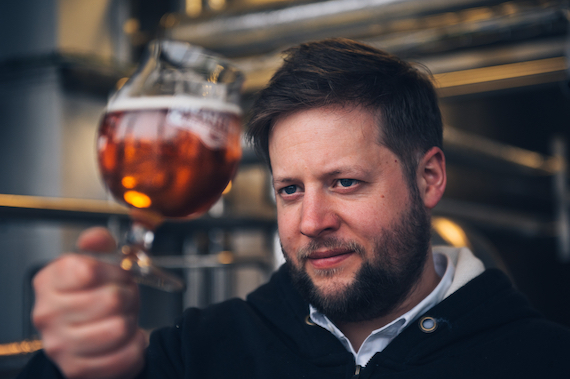But unlike the improving animation of the characters, one thing that is consistant is the brown bottle of Duff or Quahog beer that they drink. But now the ever reliable bottle is under threat from the 330ml can, so is Homer and the rest of Springfield failing to keep up with the canned beer revolution?
In 2015 more than 220 million pints of beer were shipped to the US worth a record £164m. That’s a 35% increase on the previous year and all of this coincides with the rise of UK craft breweries such as Scottish brand BrewDog, which was recently valued at £1bn.
Since the recent emergence of the ‘craft beer movement’ in the UK, the 330ml can has begun taking over the role of bottles. This may seem like old news in the US, but the UK and other parts of Europe have only recently begun the transfer from glass to aluminium.
Between January and September 2016, 53% of the 4.5m hl of beer that was exported from the UK was canned. This makes cans Britain’s most used vessel for exporting its local beers to Europe and further abroad.
But, why have breweries suddenly begun scrapping the old and ever reliable bottles for aluminium cans? Practicality? Fashion? Economic benefit?
THE CAN CAN
Meantime brewery in London began canning its three most popular beers in April while Black Sheep, Singha Beer, Hop Stuff brewery and many others were simultaneously following suit.
Ciaran Giblin, brewmaster at Meantime sat down with Drinks International to discuss the emergence of caned beers in the UK.

Ciaran says, “I like to think that in US states where craft beers really took off, there’s a lot of outdoor activity so bottles just weren’t very practical to carry. And there’s no need for a bottle opener, providing you value your teeth.
“I also think that small cans are more sessionable and user friendly than bottles.”
Of course, beers have been canned in various forms for nearly a century and big breweries like Carlseberg, Stella Artois and Fosters are most recognised for their 500ml cans, often marked as a value six-pack in supermarkets. However, the new craze for the 330ml ‘Coke-size’ cans have been adopted by seemingly every microbrewery in the UK.
Bottles however, have reigned over the beer industry since mass production and exports kicked-off in the early 20th Century. So generally speaking it’s very easy to get hold of a second hand bottling system and maintain a cheaper line of production, compared to the more modern, often expensive canning lines.
Ciaran says, “We now have access to a rotary system which is far superior to what we call a linear canning system. If you imagine having a line of cans moving in a straight line and getting filled and sealed, compared to a curved line of cans there a lot of differences.”




